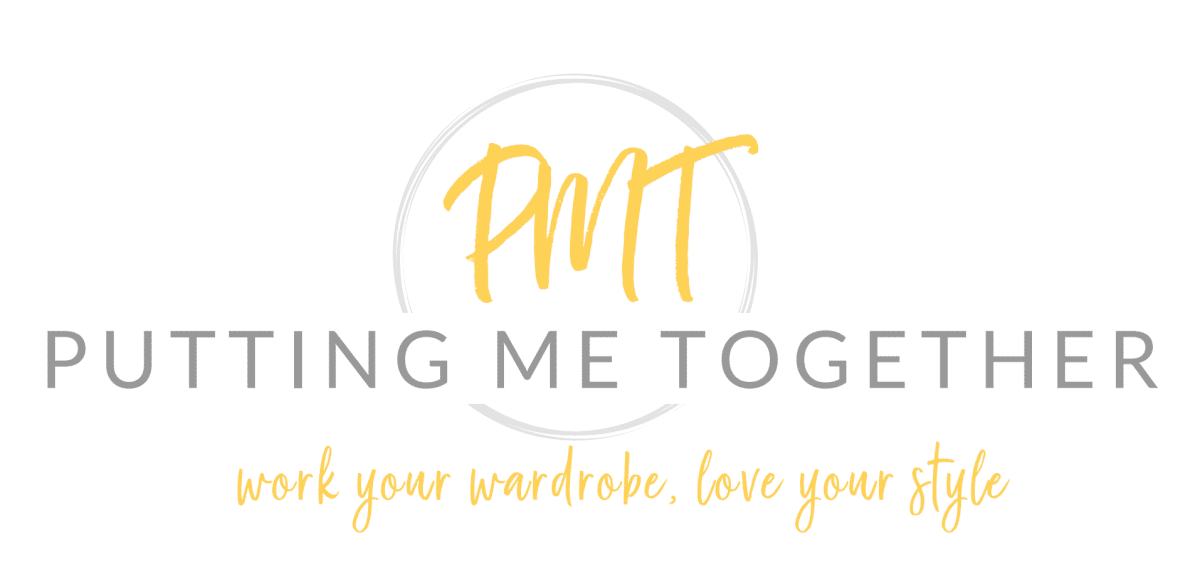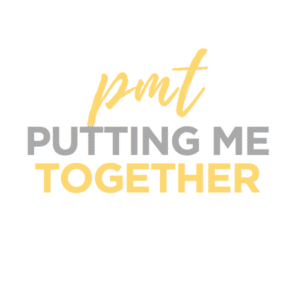Ohhh, business casual. There have been so many questions about this that I can’t even keep track of them all now! From wondering what is business casual style in the first place to troubleshooting all sorts of specific styling issues with business casual outfits, the questions are endless. I thought today we should lay the foundation and talk about what business casual style is.
I’ve heard from over 1,000 of you (yes, that’s a LOT!) about what is appropriate in your business casual environment, and can safely say this: It is ALL. OVER. THE. PLACE. Ranging from jeans being totally okay as business casual to no jeans but colored denim is okay (🧐—why does this make sense to employers? 🤷🏻♀️) to strict no jeans and closer to business professional and everything between. There is a spectrum of more casual business casual to more professional business casual, all under the name of “business casual,” and every work environment has a different standard. It’s truly all over the place!
We’ve been chatting a bit on social media about business casual, and I thought today we’d open the discussion on the blog too. I don’t necessarily have new information to offer, and I’m definitely NOT an expert when it comes to business casual style. BUT, I do have input from over 1,000 PMTers that I can share. I personally find it helpful to hear what other people are doing. Sometimes it helps me learn new things. And other times, even if it’s something I’m already doing, knowing what other people do the same feels affirming or validating and gives me a confidence boost. That is always positive!
I hope to give a framework for business casual outfits that I’ve found helpful over the years. We’ll use that as a starting place and then talk about how to adjust it according to your work environment. Let’s dig in!

How I Define Business Casual: A Formula to Start With
As a very simple foundational formula, I think of “business casual” outfits as a combination of business (or dressier) elements and nicer casual elements. This is the same way I think of “dressy casual” outfits, which you’ve heard me talk about a lot–casual clothes mixed with dressy clothes–applied to the term business casual.
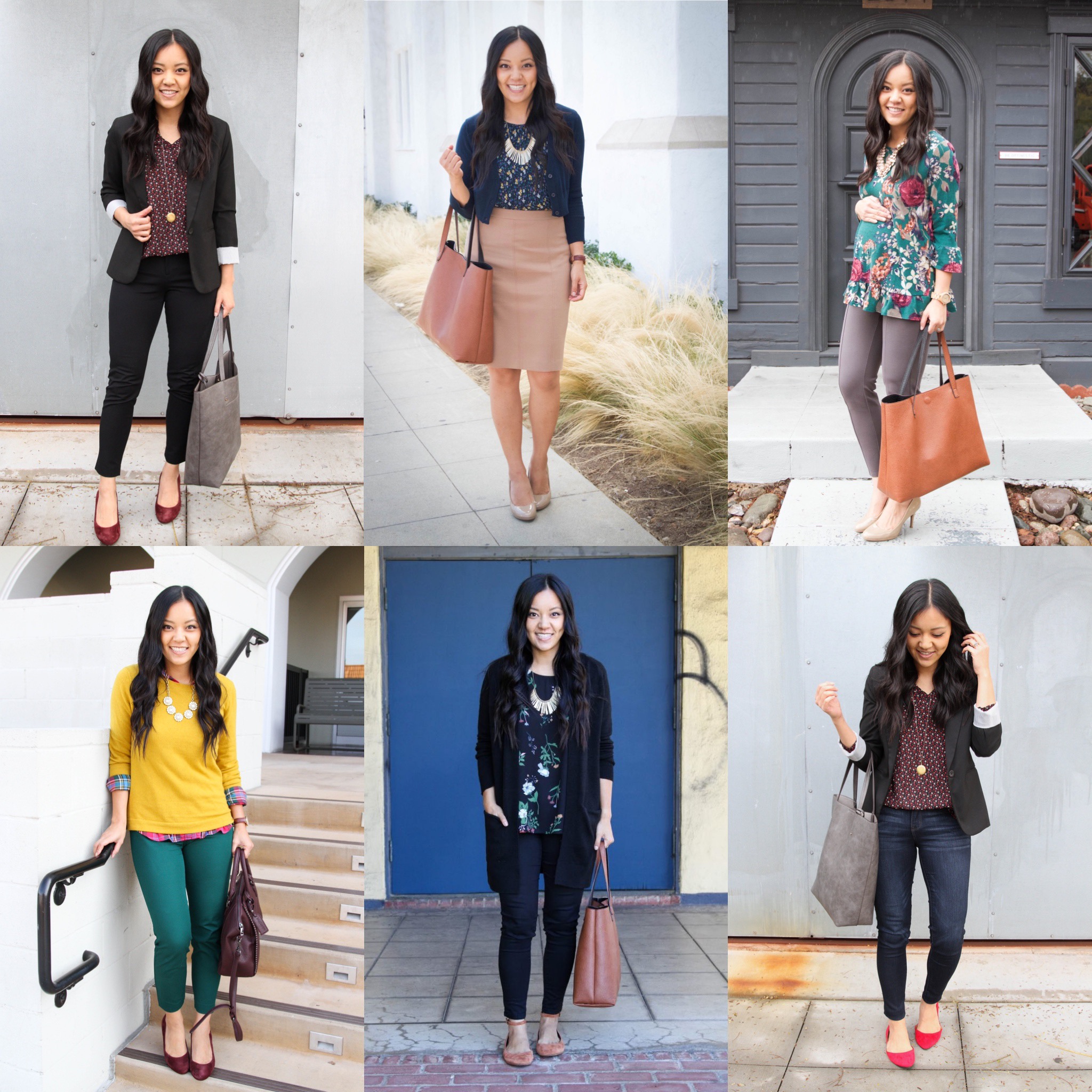
Business/Dressier Elements
Business elements include things like blazers, slacks/trousers, nicer skirts like a tailored pencil skirt or nice a-line skirt, tailored shirts, nice dresses, heels or sleek flats, etc. They might also simply be dressier elements like a nice necklace or nicely tailored sweater.
Nicer Casual Elements
Casual elements in a business casual outfit should be on the dressier side of casual clothes. This includes things like a nice blouse, well-fitting dark wash skinny or bootcut jeans, knit blazers, flats, sleek moto jackets, tailored jersey or cotton skirts, cardigans, etc. and excludes things like UGGs, extremely faded or distressed or busily embellished jeans, and hoodies. There isn’t anything wrong with any of the latter, they’re just too casual for a business casual work environment! 🙂
These categories totally aren’t strict. For example, some items fall in between, like a nice blouse or certain styles of flats. But hopefully you kinda get the big picture in the sense that it’s a mix of business and casual. However, within this formula there is still a lot of room for flexibility–for better or for worse–so let’s talk about that!
The Spectrum of Business Casual Style
For business casual outfits, I usually go for a mix of items from both business or dressier items and casual. But, within that framework, there is a spectrum of how casual or dressy/business-y the level of business casual style is, depending on the industry. The more relaxed/casual side of business casual ends up looking more like what I personally consider dressy casual outfits while the other end starts to resemble business professional attire. Yet all of that is still considered business casual depending on your specific work environment. (Like we’ve been saying, it’s all over the place!)
Personally, I love differentiating “business casual” from “smart casual.” However, most employers don’t use those distinctions and instead lump everything under “business casual,” which is why I think the term can be so hard to pinpoint.
Given that, there are tons of nuanced scenarios of how dressed up or dressed down to be. We can’t tackle each one, but we can talk about some overarching guiding factors instead.
Work Environment or Industry

This factor probably has the most significant impact on how casual or dressy your work’s definition of business casual is. Some industries lean heavier on the business side of business casual style, like finance or legal fields. Other types of work lean more on the casual aspect, like some education/teaching roles and the tech industry. Meanwhile, business casual in a creative field might afford an extreme amount of flexibility. Again, it’s all over the map.
You can get somewhat of a gauge by paying attention to others in your field. If people around you ever cross into business professional attire, then you should probably aim for the dressier end of business casual (and maybe consider business professional outfits too). If people around you, especially those higher up than you, are always in jeans, then it’s probably an indication that the work culture is generally more casual. Or, your work might be in between.
Role at Work
And then of course, you’ve got to factor in what your role is at work or even what kind of activity you might be doing on a particular day. From what many of you said on social media, it seems like you have a great handle on when you need to dress up and when you can be more casual. Like, giving a presentation, interfacing with clients, etc. versus a regular day in the office vs. casual Friday. Just thought I’d throw this in here in case it wasn’t on some people’s radars!
How to Dress the Formula Up or Down
So, how can we take our formula of business pieces + casual pieces to put together more relaxed business casual outfits versus more professional business casual outfits?

Number of Business Elements vs. Casual Elements
One easy way to make a business casual outfit more or less dressy is to increase or decrease the number of business vs. casual elements in the outfit. For example, let’s look at the outfits below:
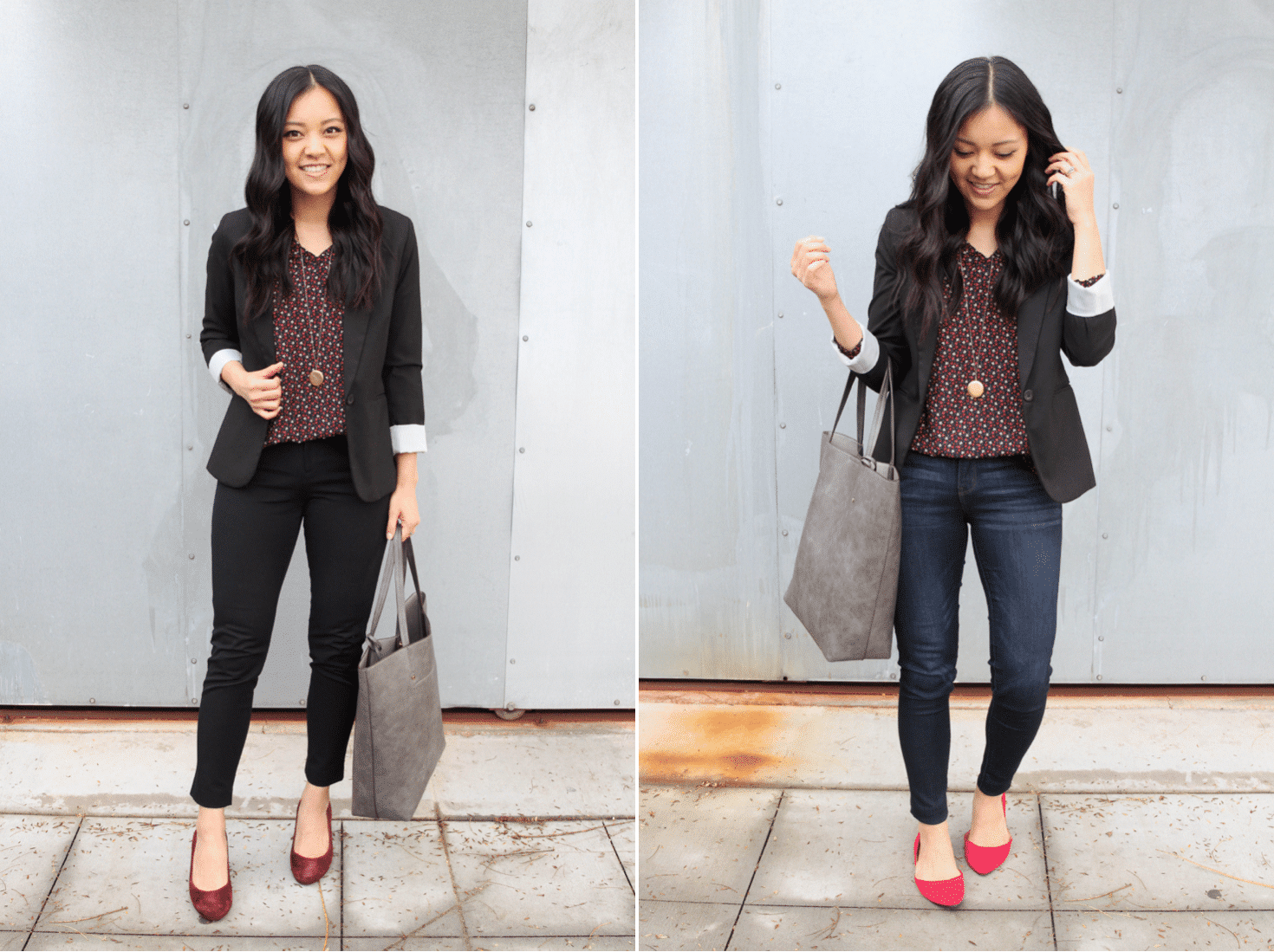
On the left, the outfit has black pants (business) + blouse (nice casual or in between) + blazer (business) + pumps (business/dressy). It’s got business-y elements mixed with a dressy casual blouse. If you add up all the business elements and all the casual elements, the total outfit leans more business, or at least on the dressed up side of business casual.
On the right, the outfit has the same top half with a different bottom half of jeans plus colorful flats. Now we’ve got a blazer (business) + blouse (nice casual or in between) + jeans (nice casual) + flats (nice casual). It’s got more casual elements than business elements, and therefore the outfit is on the more relaxed end of the business casual spectrum.
If you want to be dressier, wear more business elements than casual elements. If you want to be more casual, wear more casual elements than business elements. Not too complicated, right?
Material and Cut of Garment
The material and cut of the garment can also make your outfits more dressy or less dressy. For example, not all blazers are equal. A relaxed jersey blazer is very different than a nicely tailored suit blazer, and both are different than an in-between twill blazer. Another example is that not all business casual pants are equal. Some pants are made of a smoother, sleeker material that leans more towards business professional outfits while others are made of cotton and are more on the casual end of the business casual spectrum. And of course, there are many others in between.

We can see this with the dresses above. On the left, the dress is tailored and made of a non-jersey, non-cotton material that’s hard to dress down. On the right is my favorite “pajama dress” (as I like to call them, because they’re so comfy and soft that they feel like pajamas!). It has a way more casual vibe. Honestly, this to me is just a casual outfit, but I’ve seen literally hundreds of women wear this in their business casual environments and be 100% appropriately dressed. ??♀️ (Goes to show what we all already knew–business casual is so different everywhere! ?)
Anyway, material and cut. Just things to be mindful of!
Two Rules of Thumb
Dress for the part you want, (not for the role you have). Meaning, dress a step up. Stacy and Clinton from What Not to Wear said this all the time! They’d say if you are hoping to advance in your career, present yourself as someone who belongs in that role by dressing the part (and of course being amazing at what you do! :P) How we present ourselves at work, for better or for worse and whether or not we think it’s fair, plays a big part in what people think we’re capable of.
When it comes to work, when in doubt, be on the dressier side of things. I think most of us hate being inappropriately dressed, whether way overdressed or way underdressed. I’ve done both, and I personally feel more awkward when I’m underdressed than when I’m overdressed–especially regarding work! There is so much at stake when it comes to the impression you make at work. If I’m going to be inappropriately dressed, I’d way rather have the impression be that I care a lot, have my act together, and am ahead of the curve than behind the curve and trying to catch up.
Okay, just had to say those things! Takeaway: it does not hurt to be a little overdressed while it totally can hurt to be underdressed.
SURVEY: Which Business Casual Outfit Works for You?

I did this survey on Instagram and Facebook recently and would love to hear from you too! The three outfits above vary on the spectrum of business casual, and I’d love to know which of them work for your business casual work environment? (Not talking about casual work or business professional environments. 🙂 )
On Instagram and Facebook, most said Outfit 2 would work the best for them on most days in terms of level of casualness vs. business–it’s that in between sweet spot of not quite being casual but not being overly dressed up. Outfit 1 was not far behind, and many said it’d work better for a dressier day like when giving a presentation or meeting with higher ups. Outfit 3 worked for almost everyone at least for casual Friday, but only for about 15% of people for Mon-Thu. Would love to know about your work environment, so…
Which is it? 1, 2, or 3? All of them? A combo of two of them? Let me know in the comments below!
For business casual outfit inspiration, check out my business casual outfits HERE. NOTE: Some posts may have several outfits that include casual outfits. If it’s under the biz cas label, it means there’s at least ONE outfit in there that’s business casual. You can always find these by going go the menubar at the top of this blog, hovering over “Style Help,” then clicking “Business Casual Outfits.”
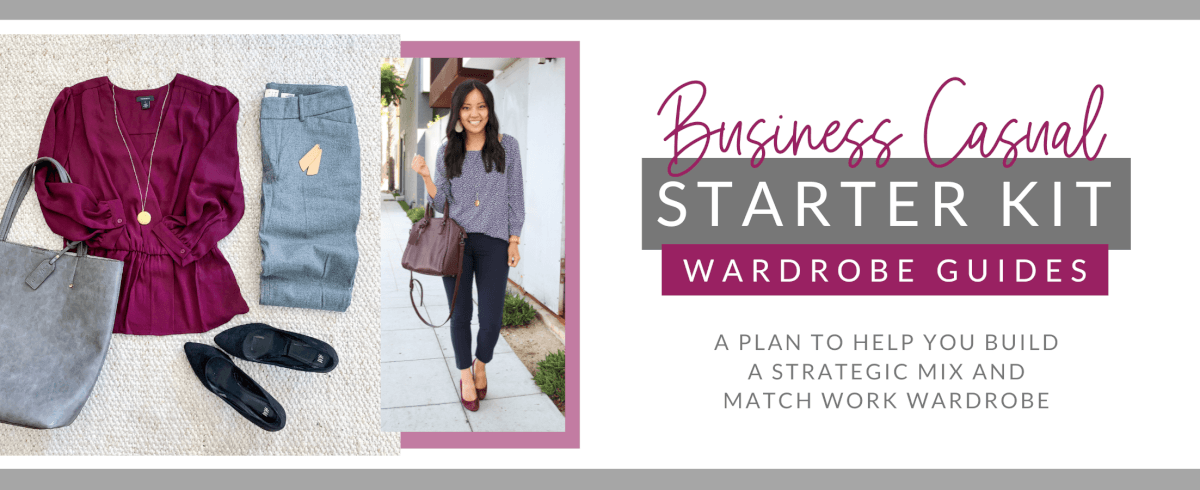
I created Starter Kit Wardrobe Guides to help you build insanely versatile mix-and-match wardrobes. You’ll get a blueprint for building your own little starter wardrobe of 9 to 15 pieces, complete with 35+ outfit ideas with those pieces. It includes primarily outfits for Level 2 (mentioned above) plus how to dress down the items for Level 1 and how to elevate them for Level 3.
Did I mention it also comes with a SHOPPING GUIDE to help you find some good pieces like the ones in the guide? Yep!
This is the PERFECT tool if you’re starting a new job, reworking your work style, or just want to make sure your existing wardrobe is set on the right foundation for ultimate mixing and matching.
Check out the Business Casual Starter Kit Wardrobe Guides HERE!
